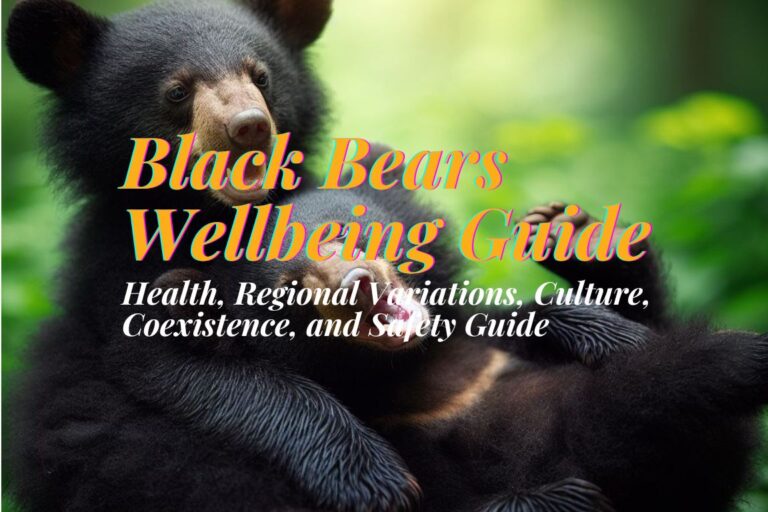Beavers: Habitat, Types & Facts – Animallearns
| Characteristics | North American Beaver (Castor canadensis) | Eurasian Beaver (Castor fiber) |
| Average Size | Approximately 3.3 to 4.3 feet (including tail) | Approximately 2.6 to 3.3 feet (including tail) |
| Average Weight | 40 to 70 pounds | 30 to 60 pounds |
| Fur Color | Brown with a reddish tinge | Dark brown |
| Diet | Herbivorous; feeds on bark, leaves, twigs, aquatic plants | Herbivorous; feeds on bark, leaves, twigs, aquatic plants |
| Incisor Teeth | Large, continuously growing, sharp, and orange | Large, continuously growing, sharp, and orange |
| Webbed Hind Feet | Present | Present |
| Tail | Broad, flat, leathery scales, and sparse, coarse hairs | Broad, flat, leathery scales, and sparse, coarse hairs |
| Nocturnal Behavior | Yes | Yes |
| Social Structure | Lives in colonies with a monogamous breeding pair, offspring, and sometimes older siblings from previous litters | Lives in colonies with a monogamous breeding pair, offspring, and sometimes older siblings from previous litters |
| Dam Building Behavior | Highly skilled in building dams from mud, sticks, branches, and stones to create ponds | Highly skilled in building dams from mud, sticks, branches, and stones to create ponds |
| Geographic Range | North America (Canada, U.S., Mexico) | Europe and parts of Asia |
Nature’s engineers, beavers reshape their aquatic habitats with their sharp incisors and strong jaws. They are the biggest rodents in Britain, and they love living near fresh water. They look for places with lots of plants, trees, and woods, where they feel safe and happy.
These furry animals are not very fast on land, but they are amazing swimmers like dolphins and blue whales. They like to have deep water around them, at least 70cm deep. If the water is too shallow, they don’t give up.
They use mud, wood, and stones to build dams that make the water deeper. Their dams are not perfect, but they slow down the water and create ponds. Beavers make their homes in these ponds, where they can relax and enjoy themselves.
They are very important for the environment in North America. They make dams that stop the water from eroding the land and create ponds that are home to many other animals. They are very clever and hard-working rodents that change the world around them for the better.
Characteristics
Contents
Physical Characteristics of Beavers
They have some unique and amazing features. They are very big, weighing up to 70 pounds and measuring more than 3 feet long, including their tail. Their teeth are orange and very sharp, and they never stop growing. These animals use their teeth to cut down trees and make their homes and dams.
They have webbed feet that help them swim fast and easily in the water. They also have a wide and flat tail that is very useful. They use it to balance themselves when they stand up, to steer themselves when they swim, and to warn other beaver of danger by slapping it on the water.
Their tail is covered with scales and hairs that protect them from cold and predators. These are well-adapted to live in water and to build amazing things with wood.
Behavioral Characteristics of Beaver
They are amazing animals that can change the world around them with their engineering skills. They build dams from wood and mud to make ponds and wetlands where they can live and hide from danger. They work mostly at night when it is safer and quieter.
They are very social and live with their families, called colonies. They talk to each other with sounds and tail-slaps on the water. They also show love and care by grooming and sharing food. These are incredible animals that can adapt and cooperate in their watery homes.
Habitat
They live in places where they can find fresh water, like rivers, streams, ponds, and lakes. They also need lots of plants, especially trees and shrubs, that they can eat and use to build their homes and dams. They like to live near the water’s edge, where they can go from land to water easily.
They often live in the areas between the land and the water, called riparian zones, where they can find lots of food and shelter.
These animals are very good at adapting to different places, even those that humans have changed. They can make their homes in cities and towns, using ponds and ditches that humans have made.
They can live in many kinds of habitats, as long as they have water, plants, and wood. They also make their habitats better for other animals and plants, by creating wetlands that are rich and diverse.
Behavior
They have some amazing habits and skills. They like to sleep during the day and work at night when they can avoid other animals or people. They are very good at building things with wood, mud, and stones. They make dams that block the water and make ponds.
These ponds are their homes and also help many other animals and plants. Beavers live with their families, called colonies. They have a mom and a dad, who stay together for life, and their babies, who sometimes stay with them for a while.
They work together to build their homes, called lodges, and to find food and take care of each other. They eat only plants, especially the bark, leaves, and twigs of some trees, like aspen and willow. They are very important for the environment because they change the land, make it more diverse, and create new places for water and life.
Types
There are two different types: the North American beaver and the Eurasian beaver. The North American beaver lives in North America, from Canada to Mexico. They are a bit bigger than the Eurasian beaver and have a reddish-brown fur.
The Eurasian beaver lives in Europe and Asia, where they have been brought back to some places. They are a bit smaller than the North American beaver and have darker brown fur. These two types have a lot in common, like how they act and how they live in water. But they also have some differences, like where they live and how they look.
Both types are very important for the environment because they make their habitats better and more diverse for other animals and plants.
Challenges
They can transform their environment with their engineering skills. But they also face many threats and challenges in their ecosystem, which affect their survival and the health of their habitat. Some of the biggest challenges for these animals are human activities that destroy or reduce their natural territories.
Urbanization and deforestation have forced them to compete for resources and find new places to build their colonies.
Sometimes, they also clash with humans when their dams flood farmlands or damage roads and bridges. Another challenge for Castor canadensis is pollution and water quality. Beavers need clean waterways to live and thrive, but many of them are contaminated by chemicals, waste, and runoff.
Climate change is also a challenge for Castor canadensis, as it changes the seasons and affects their food supply and breeding cycles.
They have to adapt to these changes and cope with the consequences. Despite these challenges, these are resilient and adaptable animals that can survive in different conditions and environments.
They are also important for the ecosystem, as they create wetlands, improve water quality, and provide habitats for other wildlife. These are truly remarkable creatures that deserve our respect and protection.
Interesting Facts and Anecdotes
Castor canadensis are amazing animals that can shape their environment with their engineering skills. They are famous for building dams and canals from branches and mud, which they use as their homes.
These dams can be so big and complex that they can alter the flow of rivers and create new ecosystems. In fact, some of their dams are so huge that they can even be seen from space!
Castor canadensis also have teeth that never stop growing, which helps them chew on wood and use it as their food and building material. Wood is especially important for beavers in the winter when they store it underwater and eat it when they are hungry.
They are not only hard-working but also playful animals. They like to slide down muddy slopes or splash their tails in the water, which may be a way of having fun or bonding with each other. These are truly fascinating creatures that have many interesting facts and behaviors that show their adaptability and intelligence.
Fascinating Beaver Facts and Behavior
They are intriguing creatures with a wide range of unique characteristics. These industrious rodents are renowned for their exceptional dam-building skills, which are essential to their survival. They construct elaborate dams using sticks, mud, and stones to create deep, calm ponds.
These dams serve as their homes and protect them from predators, making Castor canadensis not only incredible builders but also effective engineers of their environment.
Moreover, they are monogamous animals, forming strong family bonds. A beaver family typically consists of a mated pair and their offspring, working together to maintain their dams and lodges.
These creatures are primarily nocturnal, which means they are most active during the night, making them challenging to spot during the day.
To the casual observer, Castor canadensis may be mistaken for other animals that look like them, such as otters, squirrels, or even Eurasian beaver, but their dam-building prowess sets them apart.
The Remarkable Adaptations of Beaver
Beaver exhibit several remarkable adaptations that enable them to thrive in their habitats. These industrious mammals possess strong, chisel-like teeth that grow continuously throughout their lives.
These teeth are essential tools for felling trees and gnawing through woody vegetation, enabling them to construct their impressive dams and lodges.
They are highly skilled swimmers, equipped with webbed feet and a paddle-shaped tail, making them agile in the water. Their large, flat tails serve various purposes, such as steering in the water and providing balance on land.
While the beaver’s dam-building activities can alter landscapes, these actions also have positive ecological impacts by creating wetlands that support a diverse range of wildlife. Florida beavers and Cropton forest beavers, for instance, have contributed to the creation of valuable wetland ecosystems.
Overall, these fascinating creatures, with their cute appearance and unique behaviors, continue to captivate the curiosity of wildlife enthusiasts worldwide.
Conclusion
They make a big difference in their ecosystem. They use their engineering skills to build dams and lodges from branches and mud, which create new habitats for many other species and help control water levels in their area.
They also shape the landscape by eroding and depositing soil, making new spaces for other organisms to live. But beavers can sometimes get into trouble with humans because they cut down trees that humans need or want. That’s why it’s important to understand and appreciate how they help the environment and biodiversity.
FAQs
What are Castor canadensis?
They are the biggest rodents on earth and they live in rivers, lakes, and ponds. They use their teeth and jaws to cut trees and branches, which they use to make dams and lodges.
Where do they live?
Castor canadensis primarily inhabit freshwater environments such as rivers, streams, and lakes.
How do they build dams?
They build dams by felling trees and using them to construct barriers across flowing water. They also use mud and rocks to reinforce the structure.
Do beavers hibernate?
No, they do not hibernate. They remain active throughout the year, gathering food and maintaining their lodges and dams.
Are they important for ecosystems?
Yes, they play a crucial role in creating and maintaining wetland habitats, which support a diverse range of plant and animal species.












